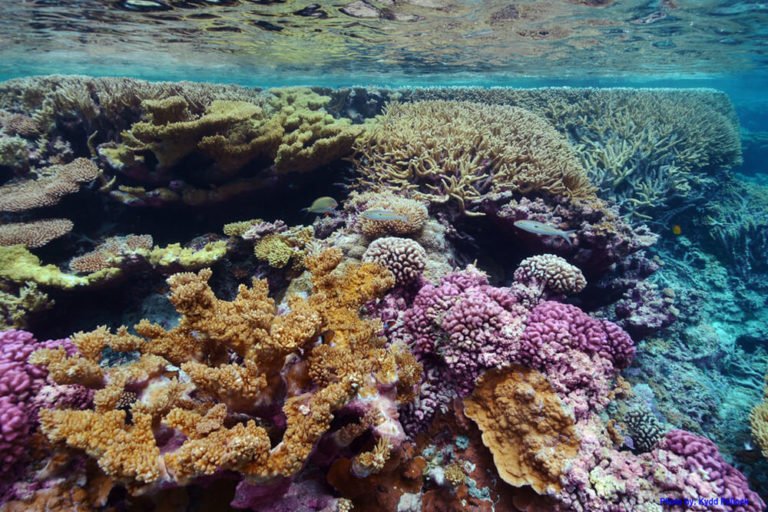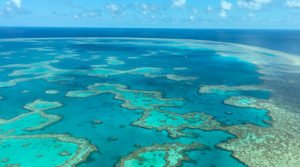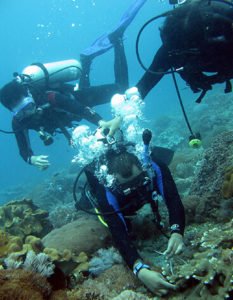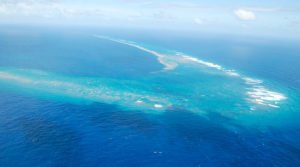At Risk Reefs: Here’s What You Can Do

As scuba divers, we have a deep love and respect for the great blue. So, when we hear that there are many reefs at risk, it’s only natural to want to get involved. From global warming to overfishing, we – as humans – are often to blame for the endangered state of today’s reefs. Without conservation efforts from organizations and volunteers, coral reefs could be extinct by 2050, if we don’t act fast.
THE GREAT BARRIER REEF
The Great Barrier Reef is one of Australia’s natural wonders—and for good reason. It’s comprised of over 3,000 individual reef systems, making it the world’s largest coral reef.
However, underneath all that beauty lies a devastating truth: it’s dying and may never recover. Due to massive bleaching, baby coral has declined by 89%. Coral bleaching occurs when unnaturally hot ocean water destroys a reef’s colorful algae, leaving the coral to starve (and turn white). In 2016 alone, scientists found that 30% of the coral died due to a global heatwave triggered by climate change.
Coral restoration efforts are being led by the Reef Restoration Foundation. This organization received the first permit from the Great Barrier Reef Marine Park Authority to begin a coral nursery project on the Great Barrier Reef in 2017. With a goal of planting 25,000 new corals on the Great Barrier Reef by 2021, the Reef Restoration Foundation needs our help. Join the crusade to save the Great Barrier Reef by adopting coral or making a monthly donation to the organization. Learn how to become a Coral Crusader.
Another way to help bring these baby corals back to where they belong, is to join a conservation group. Not only will you have the opportunity to scuba dive amongst the multitude of marine life, but you’ll be doing some good by surveying and recording new impact on the coral.
CORAL TRIANGLE
Located in the western Pacific Ocean, the Coral Triangle is connected to the Philippines, Indonesia, Malaysia, and Papua New Guinea. It’s home to 76% of the world’s coral species, 37% of the world’s coral reef fish species, and 56% of the coral reef fishes in the Indo-Pacific region alone.
With over 6,000 species of fish comes the biggest problem: overfishing. This has made the reef unsustainable for years to come. The Coral Triangle directly sustains the lives of over 120 million people in the region, and benefits millions more worldwide. A third of the world’s tuna comes from this region, yielding over 1 Billion to the US economy.
The World Wildlife Foundation (WWF) has been working in the Coral Triangle since 2007 to safeguard the region’s marine and coastal resources for future generations. Efforts include ensuring that marine habitats are sustainably managed and fisheries and marine tourism have reduced footprints.
The Coral Triangle is also in danger due to climate change, which warms the water temperatures, causing fish to die at an alarming rate.
WWF is also preparing for climate change. To better help brace for this impact, they work to plant mangrove trees. These trees release vital nutrients into the water, assisting in the return of juvenile fish and crab species.
As individuals, we can all do our part. For starters, we can enjoy seafood that isn’t on the brink of extinction or caught by unfavorable harvesting methods. And, we can minimize pollution by responsibly disposing of our trash.
KINGMAN REEF
Hawaii is on every diver’s destination list. Underneath its shimmery surface is the Kingman Reef, which stretches all the way to American Samoa. Around 176 coral species and 418 types of fish call this reef home.
Unfortunately, three ships sank within 15 years leaving this area severely damaged. Thanks to the iron absorbed by the seawater, invasive species were attracted, killing the coral.
Even though the shipwrecks have been removed, it’ll still take years for the reef to fully recover. To aid its efforts, you can join a shipwreck removal group or help remove the invasive species at Kingman Reef.
Make the most out of your next dive by seeing if you can pair your plunge with a conservation effort.





